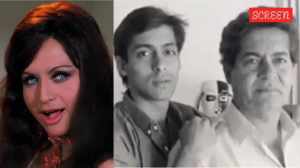Draws paint a sorry picture
Since Hansie Cronje’s nefarious act at Centurion in January 2000, trying to get a result out of a dead Test by a couple of bold declara...

Since Hansie Cronje’s nefarious act at Centurion in January 2000, trying to get a result out of a dead Test by a couple of bold declarations is inclined to raise the interest of the ICC anti-corruption unit rather than excite the spectators.
It begs, though, the question of culpability of those responsible for manufacturing dead pitches. What is the purpose of venues such as, say, Kanpur, St John’s (Antigua), Premadasa Stadium (Colombo), even St George’s Park (Port Elizabeth) in an age where results have become an important reality in spectator and corporate interest?
Of the 28 Tests this columnist has either attended live or viewed on television since January last year, the three that had him dozing off involved two in Antigua and one at Green Park, Kanpur. Although the mist on the third morning at Green Park enabled him to grab a 10-minute nap.
Yet the sight of Mark Boucher, South Africa’s wicketkeeper, trundling his twirly dibbly-dobbers in the soporific conditions of St John’s on Wednesday morning (Colombo time) was enough to question the sense of a contest that had lost any meaning. And this after young Braam de Villiers, a spare part net bowler, had already taken two wickets.
It was De Villiers who enabled the Safs captain, Graeme Smith to play his ‘ace’ by introducing the 11th bowler in a game that had become as meaningless as the facetious records it produced. A record eight centuries, including Chris Gayle’s 317, was as equally tiresome as it was to spend waking hours enduring the 400 Brian Lara plodded his way through against England at the same venue last year.
Do such records mean anything; or is this a matter of useless employment by the players? The plethora of statistics pushed out since then adds to the argument. Little wonder then that a close accountant friend, as a form af amusement, began working out how many miles the 11 Safs bowlers ran in bowling their 235.2 overs during the innings of 747 runs.
When you have two Tests at the same venue producing high scores and record partnership and the bowlers taking a pasting, does it not suggest it is time for such grounds to be scrapped from the Test circuit?
There are of course epic great escapes from defeat. Only a few weeks ago we saw Pakistan performing a miracle at Mohali. And then there is Michael Atherton’s monumental undefeated 185 at The Wanderers against South Africa in December 1995. Two worthy reasons why a Test is an enticing mental game.
Yet when batsmen score Test triple and quadruple centuries and the game ends in a draw, it’s an exercise in futility. As with Sanath Jayasuriya’s 340 at Premadasa Stadium in 1997, when Sri Lanka scored the Test record 952 for six declared. Since then the Khettarama venue has been left out of the Test fixture list; smart thinking.
It is time, perhaps, that the International Cricket Council takes to monitoring grounds where there have been, over a decade, a large percentage of draws (weather conditions excepted).
First to go would be St John’s; four draws, with Lara scoring 375 against England in 1994 and 400 10 years later, makes it obvious that playing Tests at such a place is a matter of mind-numbing attrition.
Little wonder, then, that when asked in late 2000 Stephen Fleming said he felt the baggage of the Centurion rain-affected game weighed too heavily against such declarations, no matter how sincere, being attempted again.
Or, as Steve Waugh said months later after the famous Indian Test series, teams needed to develop a winning culture and a more positive approach. Better-prepared pitches would go a long way to achieving this.



- 01
- 02
- 03
- 04
- 05




























